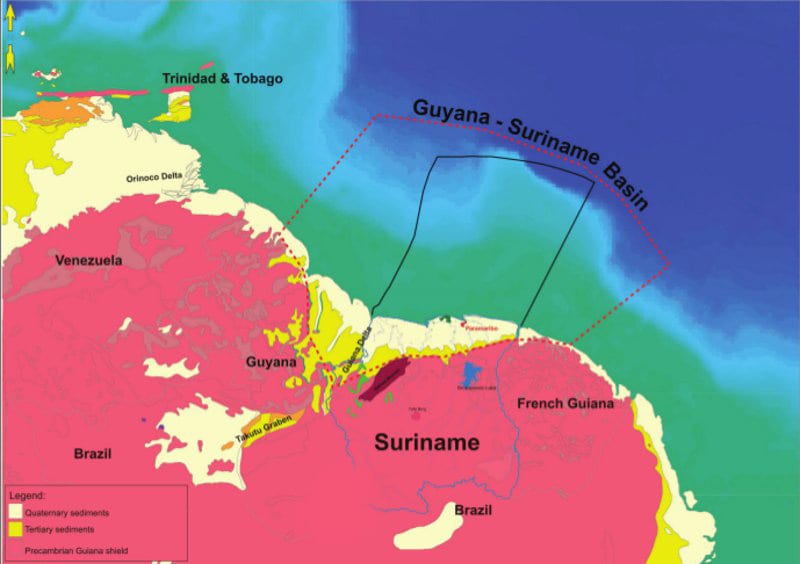IHS Markit, an industry-leading information services provider that merged this year with S&P Global, believes petroleum exploration success in Guyana has taken on a new dimension, particularly with the recent hydrocarbon discovery at the Kawa-1 well in the offshore Corentyne block.
Prior to this discovery, IHS said in a March analysis that successful exploratory activity was limited to the ExxonMobil-operated Stabroek Block located in deeper waters to the north.
It recalled that the Kawa-1 well was drilled in July 2021 by Canadian partners, CGX Resources Inc. and Frontera Energy Corporation and targeted three horizons that comprised a total net pay of approximately 54 meters in Campanian to Santonian aged turbidite sandstone reservoirs.
Post-drilling laboratory analysis on the nature of the hydrocarbons discovered determined that the well had encountered light oils and gas condensate. The “finder well” which unlocked this potentially transformational value for the basin, was subsequently plugged and abandoned.
Be that as it may, IHS said the positive results of this well have certainly inspired block interest holders CGX and Frontera Energy, to shift their 2022 exploratory drilling focus from the Demerara block to the Corentyne block as it has planned to target the Wei-1 well in the third quarter of 2022.
Furthermore, IHS said the Kawa-1 discovery has also emboldened exploration in surrounding blocks and shifted operators’ efforts towards hydrocarbon potential in the shallow water acreage of Guyana. In this regard, the company noted that Repsol for example has plans to drill an exploratory well in the neighboring Kanuku block, which could follow the similar targeted horizons of the Kawa-1 well.
Additionally, IHS said, “The results of Kawa-1 are also significant for operators in offshore Suriname, where exploration has found the greatest level of success in Block 58, which follows the prolific hydrocarbon trend observed in the Stabroek Area.”
The consultancy group headquartered in London said too, that while deeper water drilling relative to this trend within the block has been unsuccessful, “there is potential in the shallower waters based on the Kawa-1 discovery near the international border.”
Furthermore, IHS said the 2021 Shallow Offshore Bid Round for Suriname which resulted in the award of three blocks to Chevron and a consortium of Qatar Petroleum and TotalEnergies, will no doubt add momentum to the exploration of the shallow offshore region.
IHS believes these operators within the shallow water areas are likely to study the success of Kawa-1 and model their exploratory activities accordingly from geophysical surveys to drilling plans.
Additionally, the consultancy said the developmental and logistical cost of shallow water projects would likely be lower than deepwater operations, which would increase the attractiveness of the area around the Corentyne block from a budgetary perspective. It noted for example, that jackup-operated drilling is more affordable to contracting a drillship for deeper water depths.
As successful exploration within the deeper waters continues to elude operators in Guyana and Suriname, IHS believes “the shallow water regions show promise as a second front” in the overall exploration of these two countries.




